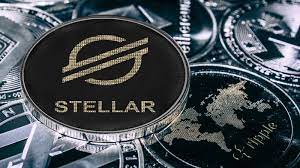Introduction
In the fast-paced world of cryptocurrencies, various digital assets offer different utilities and investment opportunities. Stellar Lumens (XLM) is one such asset that has garnered significant attention due to its unique features and applications. As with any cryptocurrency, understanding how to exchange XLM is crucial for both novice and experienced investors. This article aims to be your go-to guide for all things related to XLM exchange.
What is Stellar Lumens (XLM)?
Before we delve into the specifics of exchanging XLM, it’s important to understand what this cryptocurrency is all about. Stellar is an open-source blockchain network designed to facilitate cross-border transactions and has its native cryptocurrency called Stellar Lumens (XLM). It aims to make financial transactions faster, more efficient, and less expensive.
Why Exchange XLM?
Fast and Low-Cost Transactions
Stellar’s network is designed to facilitate quick and low-cost transactions, making XLM a preferred choice for international transfers and remittances.
Utility in Decentralized Finance (DeFi)
XLM can be used in various DeFi applications, providing a multitude of investment and utility avenues.
Diversification
Investing in XLM can offer portfolio diversification benefits. Unlike Bitcoin or Ethereum, Stellar focuses on creating a network for financial institutions.
Things to Consider Before Exchanging XLM
Market Research
Before you exchange any cryptocurrency, it’s essential to understand its market behavior. XLM is no different, and due diligence can significantly affect your investment returns.
Regulatory Compliance
The exchange you choose should comply with the regulatory guidelines and laws of the jurisdiction in which it operates.
Security Measures
Opt for exchanges that employ robust security measures like Two-Factor Authentication (2FA), cold storage, and encryption protocols.
Transaction Fees
Different exchanges have different fee structures. Make sure to factor this into your cost when planning to exchange XLM.
How to Exchange XLM: A Step-By-Step Guide
Step 1: Select the Right Exchange
Your first task is to pick a reliable exchange that supports XLM. Research user reviews, check the exchange’s history, and verify its security features.
Step 2: Account Creation
The next step is to create an account. This will generally involve providing your email address and creating a strong password. You may also need to undergo a Know Your Customer (KYC) process.
Step 3: Deposit Funds
Deposit the cryptocurrency or fiat that you’ll exchange for XLM. Make sure to double-check deposit instructions and addresses.
Step 4: Locate the XLM Trading Pair
Go to the trading section of the exchange and locate the XLM trading pair relative to the currency you deposited.
Step 5: Execute the Trade
Enter the amount of XLM you wish to purchase and execute the trade. Once confirmed, the XLM will be deposited into your exchange wallet.
Step 6: Secure Your XLM
For added security, it’s recommended that you transfer your XLM to a private, secure wallet rather than keeping it on the exchange.
Best Practices for XLM Exchange
Hardware Wallets
For long-term storage, hardware wallets offer the best security.
Transaction Confirmations
Always wait for sufficient confirmations from the network before considering a transaction complete.
Test Transactions
If you’re new to XLM or the exchange platform, conduct a small test transaction first.
Limit and Stop Orders
Utilize limit and stop orders for better control over your trade execution prices.
Risks Associated with XLM Exchange
Like all financial assets, XLM comes with its own set of risks, including market volatility, regulatory changes, and cybersecurity risks. It’s essential to be aware of these when conducting any exchange.
Conclusion
Exchanging Stellar Lumens (XLM) can offer various benefits, ranging from fast transaction speeds to opportunities in emerging DeFi applications. However, it’s critical to be well-informed about the market, the exchange platform, and the various costs associated with trading. As always, make sure to employ strong security measures to safeguard your investment.
Disclaimer: This article is intended solely for informational purposes and should not be construed as financial advice. Consult a financial advisor for personalized investment guidance.
